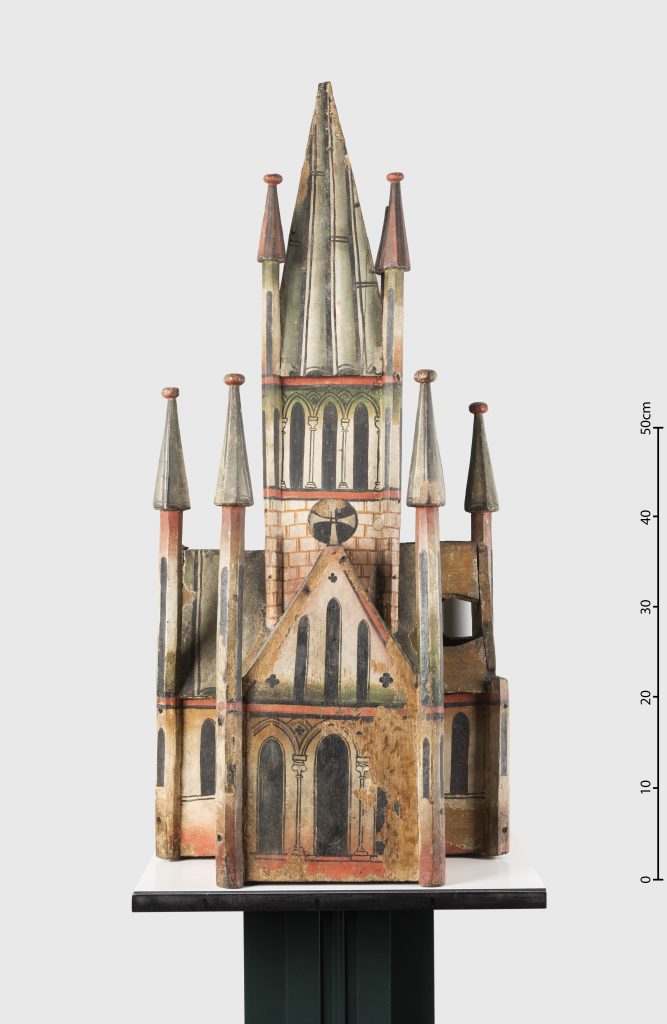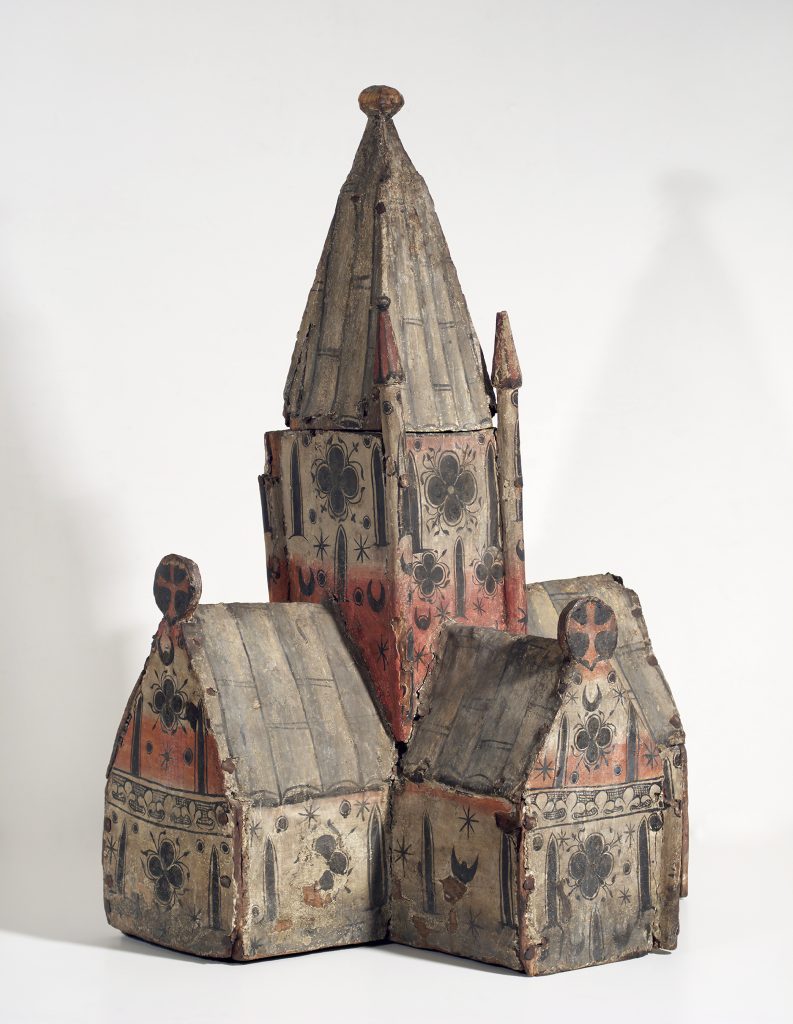
When these wooden church models entered the museum, they were registered (with a question mark) as reliquaries or as tabernacles for the storage of the consecrated Host. In the 1970s, however, Bernt C. Lange convincingly demonstrated that such miniature churches served as crowning elements to tabernacle shrines. The church model from Kinsarvik has a T-shaped ground plan with a soaring crossing tower. All the walls are painted with black lancet windows and the slanted roofs are decorated with vertical stripes in different shades of green. At the top of the front gable is a roundel showing a white cross on a black background. All the gables are flanked by slender pinnacles and the same elements also surround the pointed spire. The church model from Borgund is coarser in execution than the one from Kinsarvik, with quickly painted window motifs, but it shows a greater variety (lancet- and quatrefoil shapes). The front and the left side gables are crowned with discs showing cross motifs. As in Kinsarvik, the spire in the Borgund church model is adorned with pinnacles.

Based on the measurements of the church models, the opened width of the lost tabernacle shrines to which they belonged can be calculated. This amounted to 170 cm in Kinsarvik and as much as 200 cm in Borgund. For shrines of this size, hardly any location other than on the high altar of the respective churches would seem conceivable. In Norway, important elements of tabernacle shrines of this size and type survive, for example in the stave churches of Hedalen (Madonna, dossal, four wings, church model) and Reinli (four wings and church model; the latter now in Oslo, Kulturhistorisk museum, inv. no. C7292).
The crowning church models have been explained as a reference to the Heavenly Jerusalem or as a symbol of the Virgin Mary in her role as Ecclesia. However, the fact that architectural shapes also crowned other saint’s figures and also occur in other contexts should sound a note of caution when interpreting their meaning in all too specific terms.
Norway, thirteenth century
From Kinsarvik (Hardanger), in the museum since 1870, and Borgund (Sogn), in the museum since 1891
Oak, painted
H 96 x W 42 x D 42 cm (Kinsarvik)
H 86 x W 58.5 x D 40 cm (Borgund)
Inv. nos. MA 161 (Kinsarvik), MA 288 (Borgund)